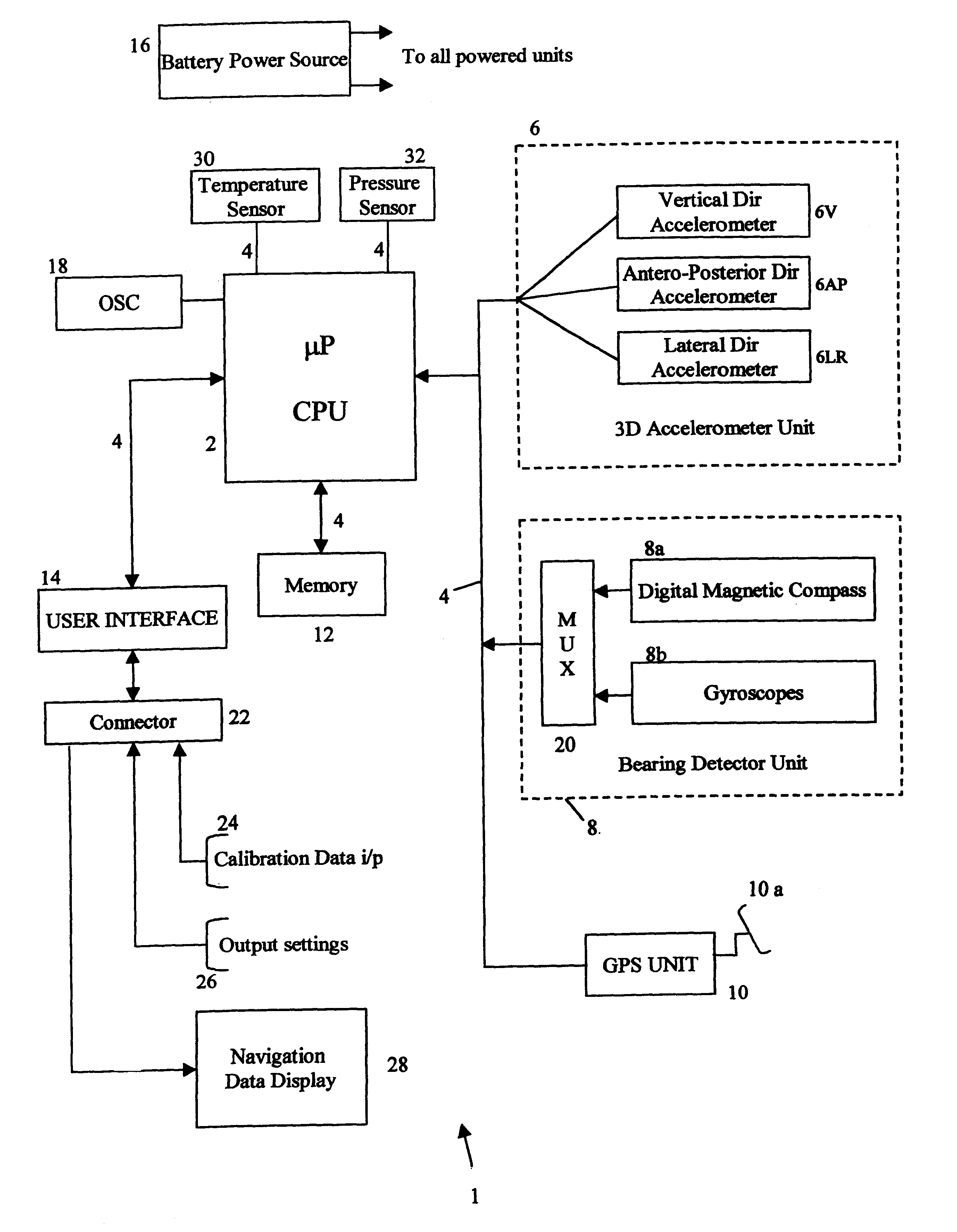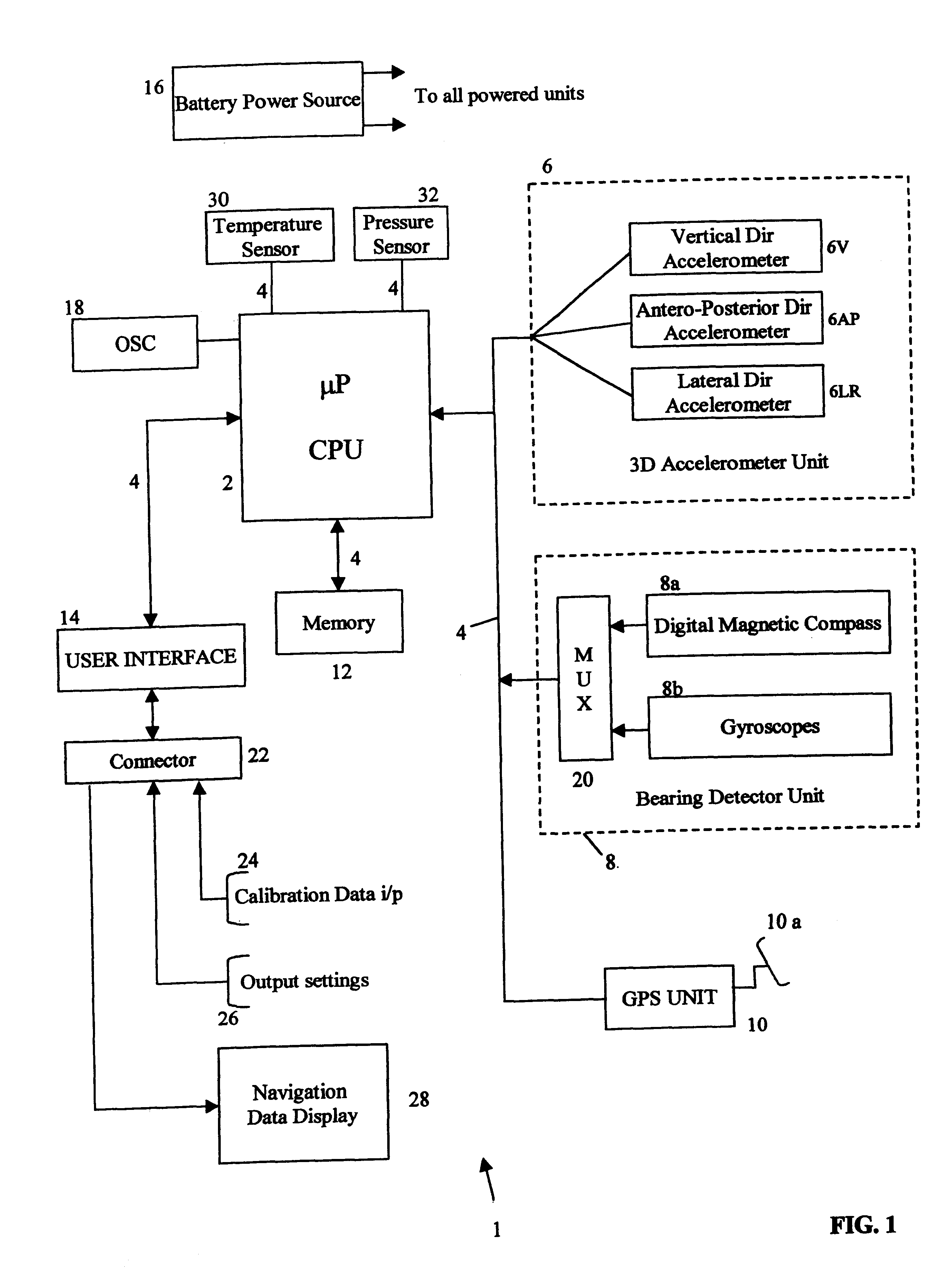Pedestrian navigation method and apparatus operative in a dead reckoning mode
a technology of dead reckoning and pedometer, applied in the field of pedestrian navigation, can solve the problems of inability to reliably forecast the direction of distance measurement, navigation instruments, instruments, etc., and achieve the effect of avoiding the possibility of slipping, and avoiding the possibility of falling
- Summary
- Abstract
- Description
- Claims
- Application Information
AI Technical Summary
Benefits of technology
Problems solved by technology
Method used
Image
Examples
Embodiment Construction
of the Algorithm for Extracting Navigation Information from the Sensed Signals and Empirical Data
FIG. 11 outlines the structure of the algorithm used for obtaining position, velocity and orientation from the outputs of the accelerometer unit 6 and bearing detector unit 8, using inputted physiological characteristics and the step model described in the previous section.
The raw data signals accessed from the accelerator unit 6 and bearing detector unit 8 (box 50) are subjected to preprocessing 52. This involves noise filtering, gain correction, digitization etc. Such functions can be performed by means of circuit elements within the units 6 and 8 and digital signal processing by the microprocessor 2, or by peripheral processors associated with these units.
The thus pre-processed data is fed into the step model(s) 54 stored in digital form within the memory 12. The physiological characteristics 56 are also fed into the step model(s) 54. They are supplied externally via the calibration d...
PUM
| Property | Measurement | Unit |
|---|---|---|
| displacement | aaaaa | aaaaa |
| displacement speed | aaaaa | aaaaa |
| accelerations | aaaaa | aaaaa |
Abstract
Description
Claims
Application Information
 Login to View More
Login to View More - R&D
- Intellectual Property
- Life Sciences
- Materials
- Tech Scout
- Unparalleled Data Quality
- Higher Quality Content
- 60% Fewer Hallucinations
Browse by: Latest US Patents, China's latest patents, Technical Efficacy Thesaurus, Application Domain, Technology Topic, Popular Technical Reports.
© 2025 PatSnap. All rights reserved.Legal|Privacy policy|Modern Slavery Act Transparency Statement|Sitemap|About US| Contact US: help@patsnap.com



